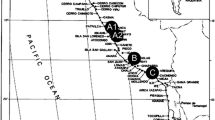Summary
A relatively high temperature treatment, applied during anthesis, was shown to enhance self-seed production through pseudo-self-compatibility in normally self-incompatible red clover (Trifolium pratense L.). The self-seeds were produced in cultures of excised stems held in 2.5 percent sucrose. The stems were excised when petal color was beginning to appear in the buds. During anthesis the cultures were incubated with the flower heads at 40 ° and the stems at 25 °C. When most of the florets per head had opened the cultures were transferred to 20 °C and held at that temperature during the period of pollen growth through the styles and also during seed development. The addition of calcium nitrate and boric acid to the culture medium did not enhance anthesis, seed weight, or the number of seeds produced.
Plant genotype and the environment provided before anthesis were the primary factors influencing the number of self-seed produced. Although not all attempts to produce self-seed have been successful, with repeated trials all clones we tested produced some seed.
Zusammenfassung
Durch eine Behandlung normalerweise selbstunverträglichen Rotklees (Trifolium pratense L.) mit verhältnismäßig hohen Temperaturen während der Anthesis ergab sich eine Erhöhung des Samenertrages durch Pseudo-Selbstverträglichkeit. Die Samen aus der Selbstbefruchtung wurden an Kulturen abgeschnittener Stengel erzielt, die in 2.5% Sucrose gehalten wurden. Die Stengel waren zu dem Zeitpunkt, an dem die Petalenfarbe in den Knospen sichtbar wurde, abgeschnitten worden. In einem Brutraum wurden die Blütenköpfe während der Anthesis bei 40 °C und die Stengel durch Eintauchen der Kulturgläser in ein Wasserbad bei 25 °C gehalten. Sobald sich die Mehrzahl der Blütchen geöffnet hatte, wurden die Kulturen in 20 °C übergeführt und in dieser Temperatur während des Pollenwachstums durch die Griffel und auch während der Samenentwicklung belassen. Eine Beigabe von Kalziumnitrat und Borsäure zum Kulturmedium steigerte weder die Anthesis noch das Samengewicht und die Anzahl der erzeugten Samen. Der Genotyp der Pflanze und die Umwelt vor der Anthesis waren die Primärfaktoren, die die Anzahl der Samen aus Selbstbefruchtung beeinflußten. Obwohl nicht alle Versuche, Samen aus Selbstbefruchtung zu erzielen, erfolgreich waren, erzeugten in wiederholten Versuchen doch alle untersuchten Klone etwas Samen.
Similar content being viewed by others
Literature cited
Battle, W. R.: Seed production on excised red clover steins. Agron. Jour. 41, 141–143 (1949).
Brandon, R. A., and R. C. Leffel: Pseudo-self-compatibility of a diallel cross and sterility-allele genotypic ratios in red clover (Trifolium pratense L.). Crop Science 8, 185–186 (1968).
Johnston, Karl, N. L. Taylor and W. A. Kendall: Occurrence of two homozygous self-incompatibility genotypes in I1, segregates of red clover, Trifolium pratense L. Crop Science (In Press).
Kendall, W. A.: Growth of Trifolium pratense L. Pollen tubes in compatible and incompatible styles of excised pistils. Theoret. Appl. Genetics 38, 351–354 (1968).
Leffel, R. C.: Pseudo-self-compatibility and segregation of gametophytic self-incompatibility alleles in red clover. Crop Science 3, 377–383 (1963).
Rinke, E. H., and I. J. Johnson: Self-fertility in red clover in Minnesota. Jour. Amer. Soc. of Agron. 33, 512–521 (1941).
Silow, R. A.: A preliminary report on pollen-tube growth in red clover (Trifolium pratense L.). Welsh Plt. Breed. Sta. Bul. H. 12, 228–233 (1931).
Thomas, H. L.: Inbreeding and selection of self-fertilized lines of red clover, Trifolium pratense L. Agron. Jour. 47, 487–489 (1955).
Townsend, C. E.: Self-compatibility studies with diploid alsike clover, Trifolium hybridum L. III. Response to temperature. Crop Science 8, 269–272 (1968).
Williams, R. D.: Self and cross-sterility in red clover. Welsh Plt. Br. Sta. Bul. Ser. H. 12, 181–208 (1931).
Author information
Authors and Affiliations
Additional information
Cooperative research by Crops Research Division, Agricultural Research Service, U.S. Department of Agriculture and the Kentucky Agricultural Experiment Station. This paper (No. 68-3-102) is published with permission of the Director, Kentucky Agricultural Experiment Station.
Rights and permissions
About this article
Cite this article
Kendall, W.A., Taylor, N.L. Effect of temperature on pseudo-self-compatibility in Trifolium pratense L.. Theoretical and Applied Genetics 39, 123–126 (1969). https://doi.org/10.1007/BF00366488
Issue Date:
DOI: https://doi.org/10.1007/BF00366488




